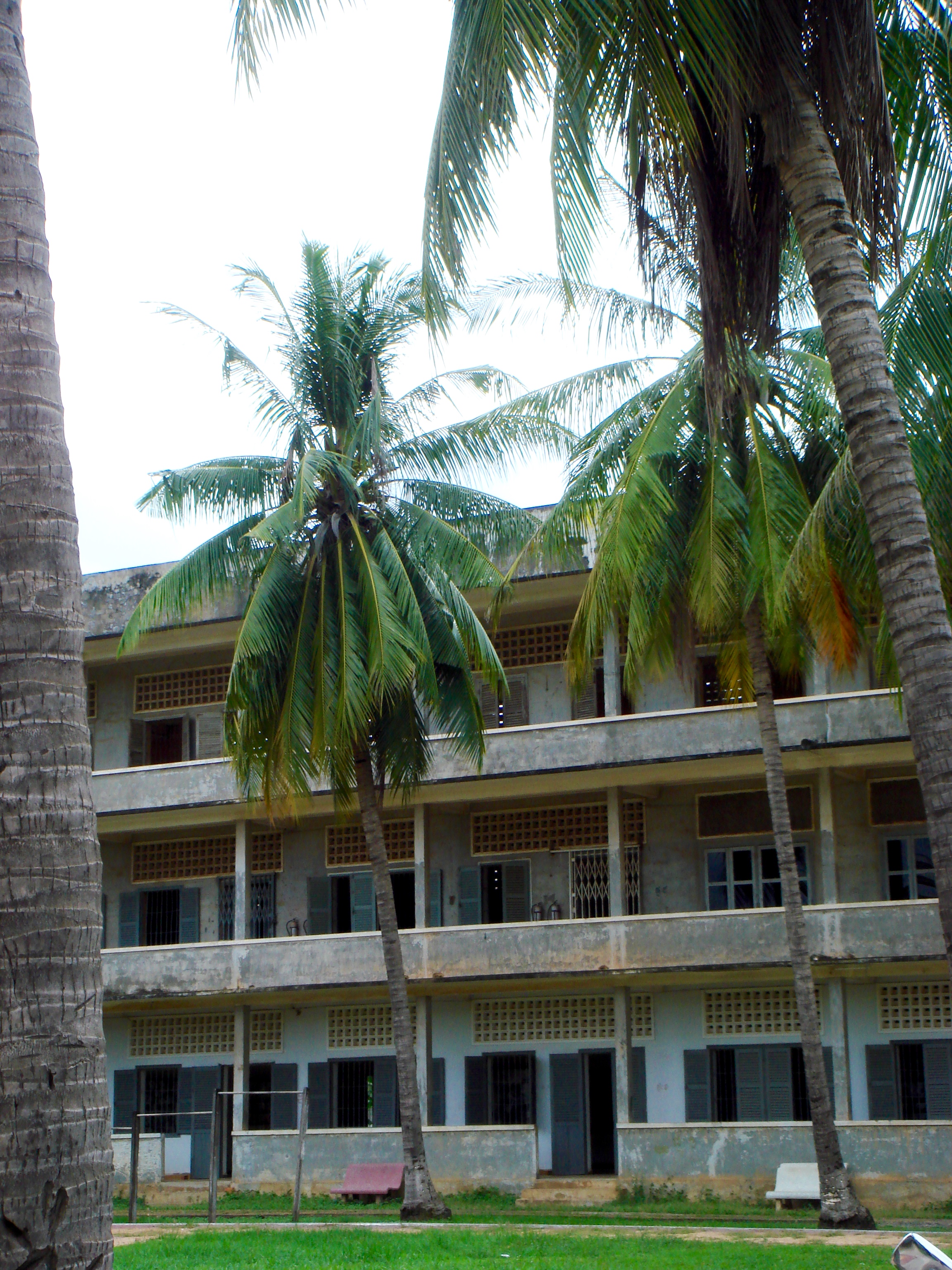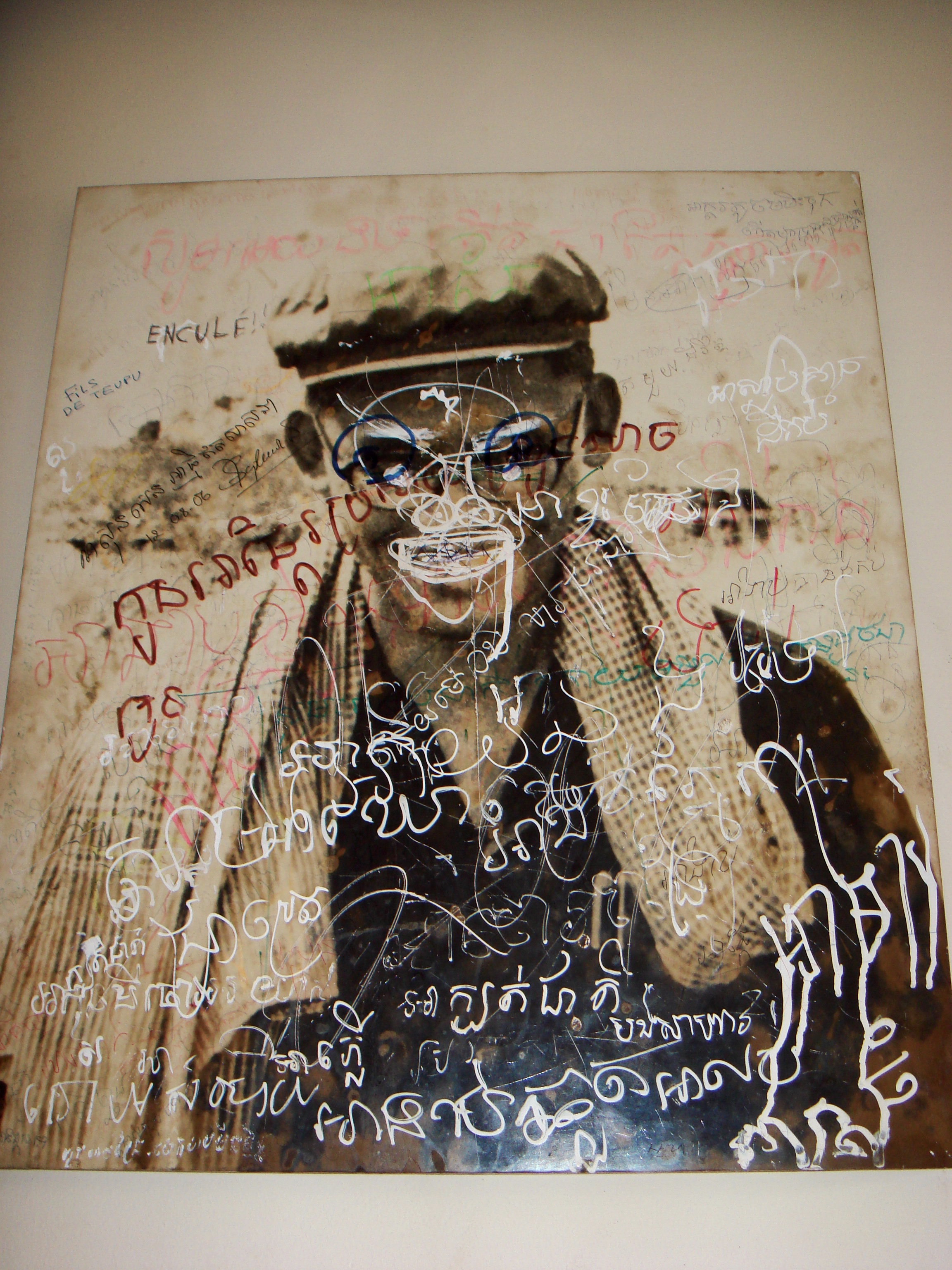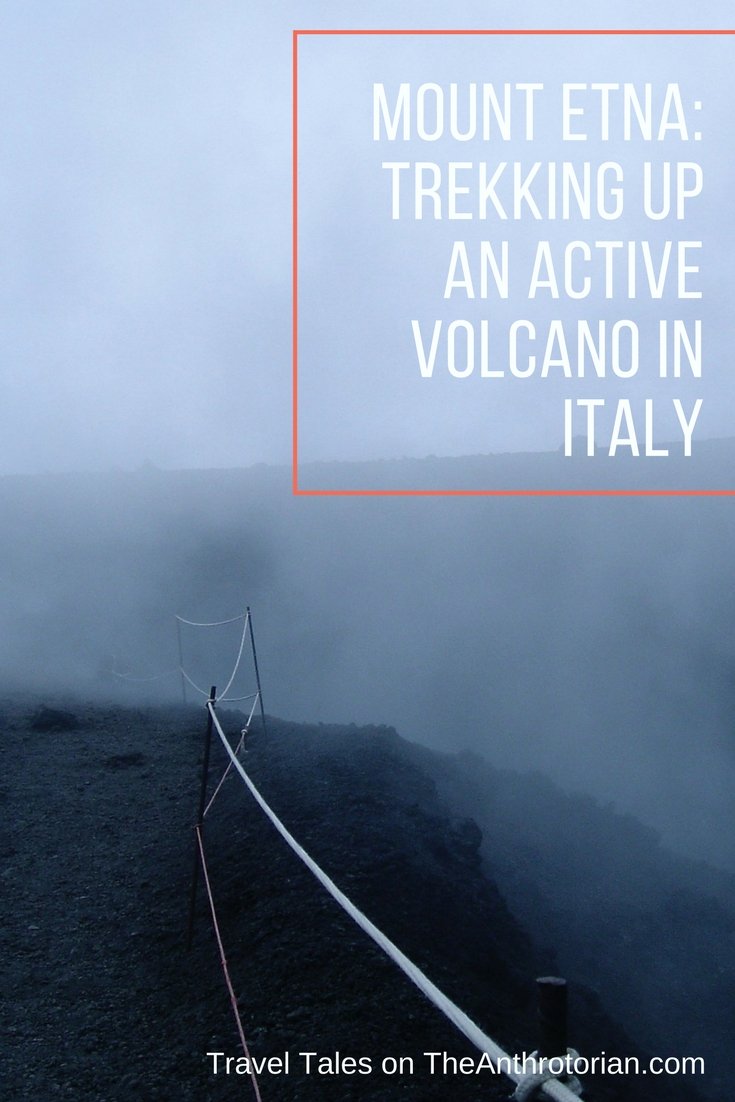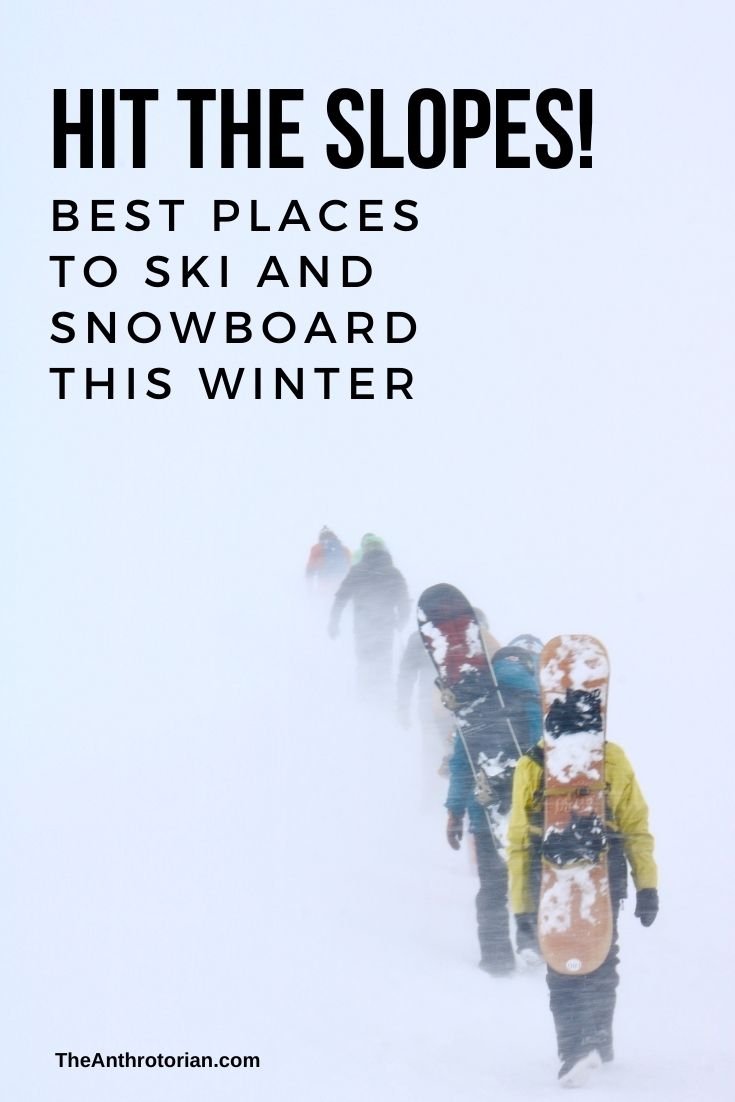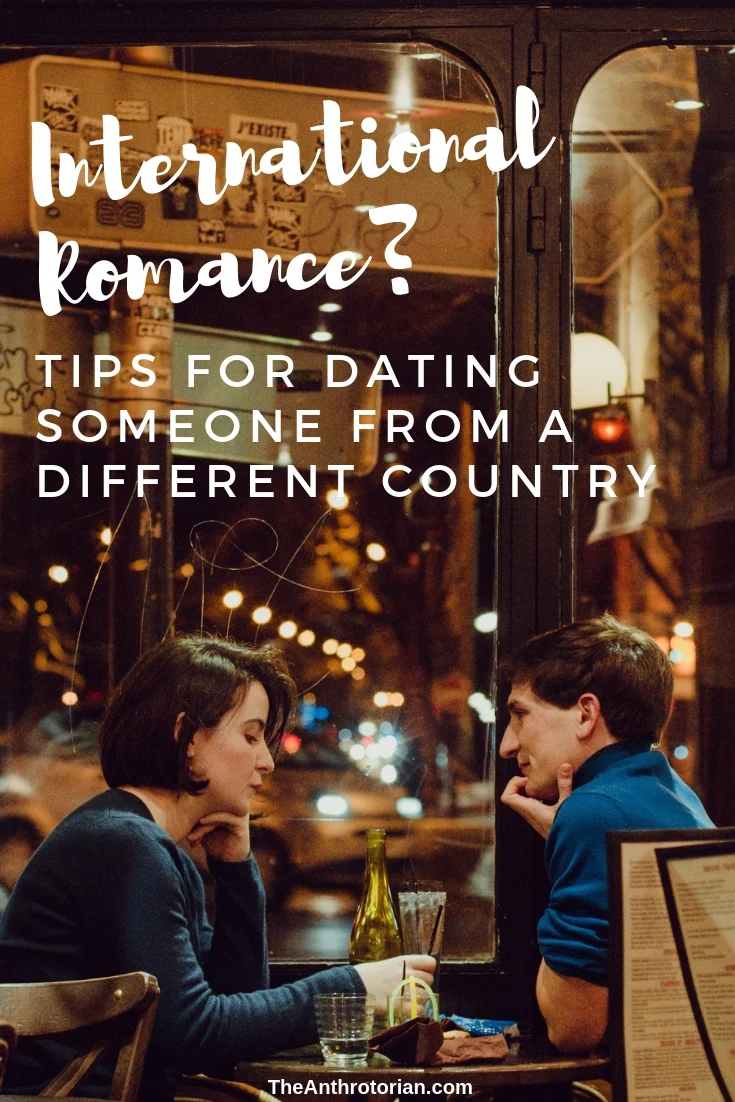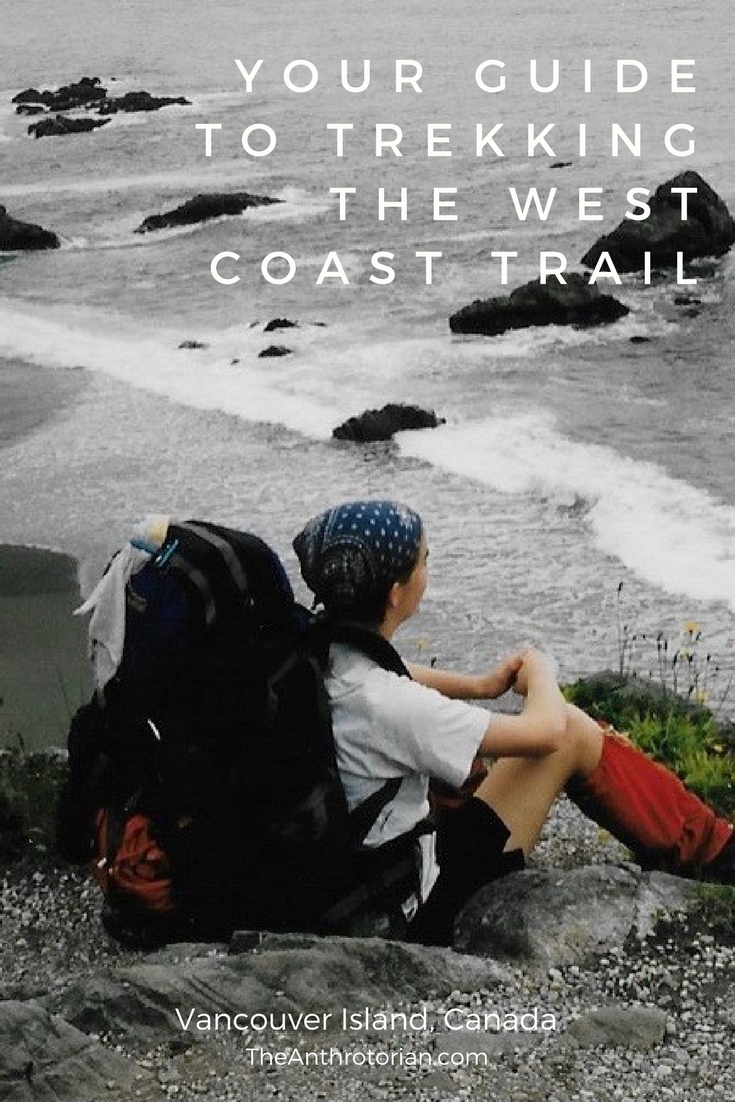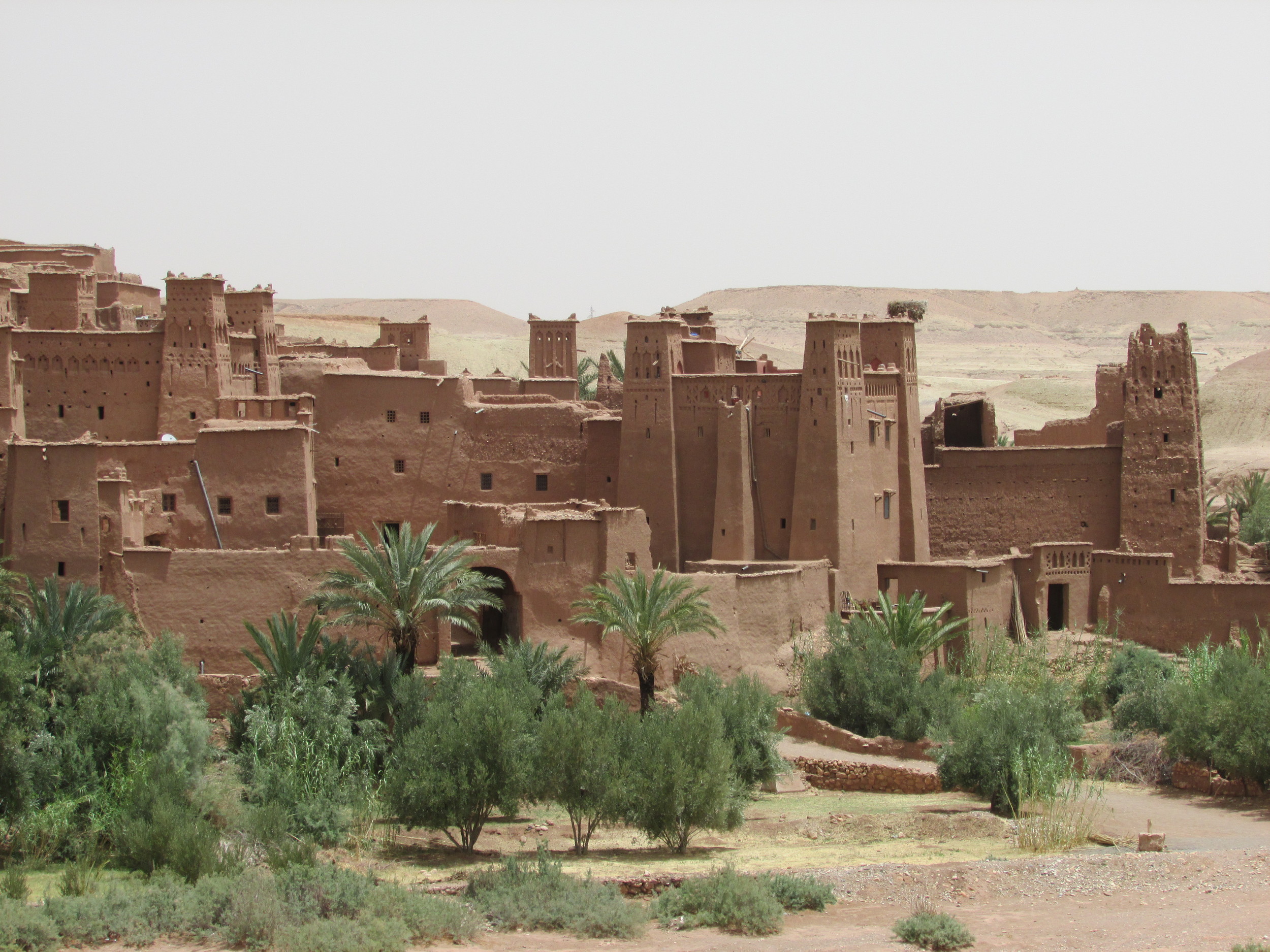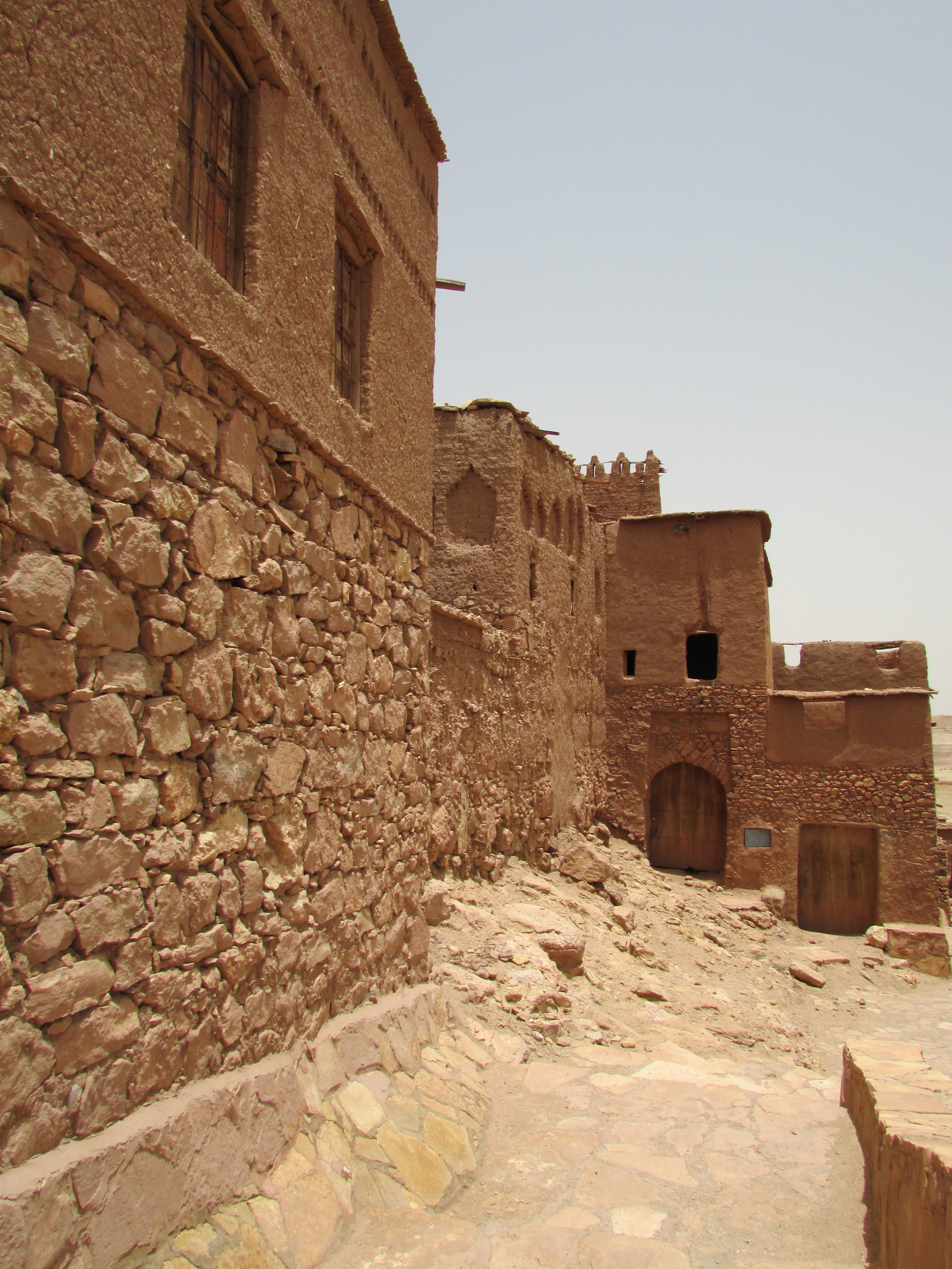You can't walk down a beach in Thailand without seeing a sign advertising yoga classes—sunset on the beach, early morning in the jungle, hot in the middle of the day. There are formal yoga schools in the cities, spiritual practices, exercise practices, fusion practices, and everything in between. In other words, if you want to practice yoga while on holiday in Thailand, you will have no problem finding somewhere to do it.
Read MoreNot A Gambler? Here Are 8 Things To Do In Vegas If You Don’t Like Gambling
Las Vegas is a magical place. The lights are always sparkling, nothing closes, there are no clocks anywhere, sequins is welcome day or night, free drinks abound, superstars grace multiple stages nightly — anything seems possible. It’s a Disneyland for grownups.
Read MoreVisiting Cambodia: Monkeys, Temples & Khmer Rouge History
A trip to Cambodia can be pretty intense.
Monkeys run through ancient temples that seem to grow out of the jungle. There are no conventional traffic rules. In fact, sometimes it seem like there really aren't any rules at all — at least not the ones that we follow in North America.
It isn't rare for an elephant to try and steal your lunch while you dine on an outdoor patio, and there are still land mines everywhere making it unsafe to wander off beaten paths.
Khmer Rouge History
In order to make the most of any trip to Cambodia, you have to understand the not-so-pleasant history of the Khmer Rouge (aka why there are land mines everywhere).
The Khmer Rouge ruled Cambodia from 1975-1979, and was one of the most lethal regimes of the twentieth century. Through their methods of agrarian communism, they had the entire country working on collective farms, or forced labor projects, growing food that they were not allowed to eat and watching their families die around them.
The regime killed anyone in connection with the former government, professionals, intellectuals, anyone wearing glasses, non ‘pure’ Cambodians, homosexuals and people who had come from urban communities. They even regularly purged within their own organization. No one was safe under Khmer Rouge rule.
People were divided into two categories: the Old People who had grown up on farms and never left them for the big cities, and the New People who they ruled using the motto “To keep you is no benefit. To destroy you is no loss”.
After four bloody years in power, they were removed in 1979 by the Socialist Republic of Vietnam.
More than 2 million people were killed. 2 million. There is no exact number yet. They are still counting the dead.
Pol Pot, Brother Number 1 (the leader of the Khmer Rouge), died on April 15, 1998 and was never put on trial.
In 1997, Cambodia appealed to the UN to set up a genocide tribunal, but it wasn’t until 9 years later, when many high ranking officials were dying of old age, that it actually came into being. In 2007, Nuon Chea, Brother Number 2, was taken into custody for “alleged crimes against humanity”.
The country is now in the midst of rebuilding itself socially, economically and most importantly, psychologically. Like many countries in South East Asia, Cambodia is turning to tourism as a financial way to rebuild their nation, and it seems to be working.
Spots To See
The temples at Angkor make up the largest freestanding religious complex in the world, and are visited by thousands of people every year by boat, plane, bus, car and tuk-tuk. There is nothing like walking through a ruined temple being both held together and torn apart by the jungle growing on, over and through its walls. At the end of the day monkeys run by as the air cools, and monks in saffron robes walk slowly and thoughtfully down the ancient stone corridors. It is definitely a sight to see, and one of the most incredible spots I have ever travelled to.
But, there are other things to see in Cambodia too!
The Mekong River is one of the largest in the world and is the home of some of the world’s only freshwater dolphins and floating villages that are a photographers dream.
Phnom Pen is a mecca of colorful markets selling clothing, fabric, shoes, jewellery and anything else you can imagine (and things that you can’t) for pocket change.
A trip to Cambodia could not be complete without a trip to the beach! Shianokville is the main beach town with great access and wide range of accommodation. The sand is white and the water is the perfect temperature. It shares its coast with Thailand, and the beaches are much the same, but underdeveloped.
Other (more serious, yet important) attractions draw attention to the Khmer Rouge era.
The Tuol Sleng Museum sits innocently amongst narrow side streets, apartment buildings and houses. Once a high school, it was converted into the largest centre of detention and torture in Cambodia. Named Security Prison 21 (S-21), it now houses a collection of photos of the both inmates, and floors of cells that have been left relatively untouched. Photos of Khmer Rouge leaders are also on display covered in graffiti, with cigarette burns for eyes. The space on the wall where the photo of Pol Pot should be lies empty. The photo was stolen and no one bothered to (or wanted to) replace it.
The Killing Fields, located just outside the city, are an unexpectedly small area that is covered in lush green grass. A massive glass pagoda stands at the entrance, piled high with skulls, femurs and other bones of the dead. The fields themselves are just that — fields. Crude signs mark the mass graves, listing the number of dead that have been found there. But not everyone has been removed. Bones protrude from pits and pathways, and the clothes of the dead become visible as the ground erodes away.
No matter where you go in Cambodia, one thing stays consistent, the children. They are everywhere. They surround you at the temples trying to sell you anything and everything in perfect English. They flirt like adults and they are so confident and straightforward, that sometimes it is only their size that can remind you that they really are children. They walk the streets hanging off your arms, looking up at you with big brown eyes, begging for food, money or anything. They are heartbreakingly cute.
Whatever you do though, don't give them money. It won't help.
There are few places in the world that truly surpass expectations, and Cambodia blew all of mine out of the water. I felt all my senses heightened when I was there, and found the adventure exhilarating. I hope you feel the same way — happy travels!
Adventure Tales: Exploring The Ancient Moroccan City of Ait Benhaddou
The thin, two-lane road cut into the Atlas Mountains in Morocco wound at almost impossible angles amongst red earth, mud brick homes, parched looking olive trees, and orchards. We were careening around every corner, barely missing the small children draped in white robes leading skinny cows down the side of the road.
Passing a slow moving car would have been a suicide mission.
The small, 13-seater bus was stuffy, hot, and full of fellow travellers half asleep from the heat and half sick from the drive. I could feel gritty red sand mixing with the sweat in my sandals. I didn’t think I would ever stop sweating — It serves me right for visiting the Sahara Desert in July.
When I signed up for the tour (Note: I am normally not a fan of tours, but I was alone in Morocco in the middle of Ramadan and wanted to spend a night in the Sahara. The only way for me to do that safely was by taking a tour), that would eventually take me to a caravan of camels, the tour operator had mentioned something about a stop at a historic town that had been in many movies. I had basically ignored what she was saying — I am used to tour "stops" being cheesy tourist traps, souvenir shops, or horrible restaurants — and focused that at the end of the drive a camel would be waiting for me.
So, when we pulled over in a small town full of mud-brick homes and spilled out of the bus happy to be on solid ground, I was amazed at what was in front of me.
A city that looked like it was straight out of a Hollywood set crawled up a hill that rose on the other side of a dry riverbed. It was about 45 degrees Celsius out, and our guide handed us full bottles of water as he began picking his way across the riverbed, telling us about the history of the city we were approaching.
Called Ait Benhaddou, the fortified city sits along the former caravan route between the Sahara and Marrakesh. There are still four families that live in the city, maintaining some of the buildings and selling their wares to tourists, while the rest of the citizens of the area now live in more modern buildings (though not that much more modern) in the village that our bus had parked in.
Frozen in time, it looked like something straight out of Aladdin, and I wasn't far off. It turns out that some MAJOR Hollywood movies were filmed in this UNESCO World Heritage Site and sun scorched desert village — The Mummy, Gladiator, Prince of Persia, Indiana Jones, Cleopatra, Lawrence of Arabia, and scenes from the TV show Game of Thrones just to name a few!!
We were given 40 minutes to wander and so I let myself get lost in the maze of narrow brick alleyways, stone staircases and hidden archways until I found myself at the top of the complex where a ruined agadir (a fortified communal granary) sat surrounded by an incredible view of the surrounding rocky desert.
Though my water was gone, and I was melting from the heat, I was elated! This stop was not what I expected at all. Not only did we get to eat some pretty great food in the end, I got to visit a gorgeous, genuinely historic site that has made appearances in some of the biggest Hollywood films — not bad for just a "stop" in a tour!
5 Reasons Why You Should Visit Hong Kong
Hong Kong is a fascinating place to travel to. It is constantly changing, modern yet traditional, full of Western businesses and democratic ideals yet ruled by the more austere communist-China way of life. The people who live there love dim sum and pizza, and never seem to stop moving.
You may be surprised to learn that most of Hong Kong is green (other than the mass of high-rises that make up Hong Kong Island of course), with beautiful hills for hiking, and plenty of outdoor activities. Another surprising fact is that the four main areas — Hong Kong Island, Kowloon, the New Territories and the Outlying Islands — are made up of more than 200 islands!!
Because of more lax regulations regarding visas, it is also one of the few places in China that can be accessed by most of the world without one. This has led to it becoming an international hub for people who are waiting to receive visas to enter the rest of the country, or other countries nearby (aka an excellent place for serious people watching).
Here are some things to do, and reasons why I think Hong Kong is worth adding to your travel list:
1. Amazing, easy to navigate public transportation
There is a comprehensive system of trains (one that passes under the harbour area!), boats, and busses that can get you anywhere you want to go quickly and easily. They are modern, clean, and there is even a high-speed train that will take you directly to the airport!
2. Kowloon
Meaning "nine dragons" in English, this is where you will find a blend of locals, expats, and tourists from all over the world. It is where opulent hotels sit across from crumbling tenements, stores selling cheap knock-offs are wedged between high-end shops, and there is non-stop chaos day and night — it's wonderful! There are markets, shopping centres, great restaurants, street food, and an incredible view of the harbour and the buildings of Hong Kong Island.
3. English-speaking friendly
Unlike other parts of China, there is a lot of English signage and many people speak English here. This is a result of Hong Kong being an English colony for so long.
4. Hong Kong Island
One of the largest islands, there is SO much to see and do here. Ride the outdoor Mid-Levels Escalator, the longest in the world, that transports pedestrians 800m from Queen's Rd Central via SoHo all the way up to Conduit Rd in Mid-Levels in 20 minutes. It passes through areas with incredible nightlife, so is a lot of fun to explore at night.
You can also check out Li Yuen St East, Li Yuen St West and the Graham St market which are right out of a movie with narrow pedestrian alleyways crammed with shops selling everything from bags to shoes to frogs legs.
The spiral incense-filled Man Mo Temple built in 1847 is one of the oldest in Hong Kong, and is an absolute must-see.
5. Lantau
Twice the size of Hong kong Island, this uncrowded, forest filled island has a massive monastery and temple complex called Po Lin on one of its highest points.
The temple is beautiful, but the real draw is the Tian Tan Buddha Statue (pictured above) that is the world's largest outdoor seated bronze buddha and can be reached by a steep climb of 260 steps.
My favourite part of visiting Lantau was riding the Ngong Ping 360 cable car which has one of the most incredible views I have ever seen!
Related Posts
The Watch List: Tracks (The Perfect Film to Inspire Adventure)
Sometimes — without even realizing it — I get myself stuck in a rut, overwhelmed by the everyday, and in need of something to inspire, cut through the crap and remind me why I do what I do.
Today, the movie Tracks did just that.
If you are looking for a movie to inspire wanderlust, this is your film.
This incredible true adventure, tells the story of Robyn Davidson, an Australian woman who decided that she was going to walk through the desert from Alice Springs to the Indian Ocean — a trip of about 2,000 miles that would take her 6-7 months.
It was the '70s, and sick of the repetitious life in the city and the "self-indulgent negativity" of her generation, Davidson felt this journey was her way of seeking solitude and relating to her father who had once travelled through the desert of Eastern Africa.
“The decision to act was in itself the beginning of the journey... I believe when you are stuck in one spot, it’s best to throw a grenade at where you are standing and jump.”
When asked why she wanted to attempt such a crazy feat that would take her through deserted, waterless wasteland, her response was continuously, "Why not?"
It wasn't until she wrote to National Geographic and requested that they sponsor her trip, that things really got off the ground. They agreed to sponsor her, as long as a photographer would be able to check in with her at various times to document the trip.
So, on April 9, 1977, Robyn Davidson, four camels, and her dog set off walking.
The resulting photos (taken by Rick Smolan) and article written by Davidson are an incredible example of what true adventure photo-journalism was before the advent of the Internet and social media.
Davidson's article was so popular, that she wrote a book expanding on her incredible journey. And now, her spectacular story has been turned into this captivating film.
Mysterious aboriginal culture, outback characters, survival instincts, real-life adventure — what more could you want in a movie?! Check out the preview below. I hope you find as much inspiration in Robyn Davidson's story as I did!
3 Islands You NEVER Want To Visit
White sand, palm trees, gentle breezes and sparkling blue water — who wouldn't want to spend time on a tropical island?! After the long, cold winter I just lived through, I would take a hot island escape in a second.
It turns out however, that not every island in this world is a so-called "paradise" destination. Here are three islands that I guarantee you won't want to go anywhere near.
A small patch of trees is the only vegetation on Clipperton Island (source)
1. Clipperton Island
This tiny, ring-shaped atoll sits about 1,000 km off the southwest coast of Mexico. It is covered is hard, pointy coral and is battered on all sides by the Pacific Ocean and steady winds. A few palm trees are its only vegetation, there is no fresh water, the island reeks of ammonia, the lagoon around it is devoid of fish (but FULL OF SHARKS) and contains some deep basins including "the bottomless hole" that has acidic water at its base.
If this isn't enough to convince you to stay away, the terrible history of the island will.
Having changed hands frequently (it has belonged to the French, US and Mexico), in the early 1900s, Mexico established a colony there, delivering supplies by boat regularly. That is until the Mexican Revolution broke out and the deliveries stopped. Slowly, the inhabitants started dying until all that remained was one man and a handful of women and children. The man decided he was "king" of the island and started raping and murdering the women until they turned on him and he was killed. The last four survivors were rescued soon after, and no one (other then the odd castaway) has occupied the island since.
One of the few photos of the inhabitants of North Sentinel Island (source)
2. North Sentinel Island
Part of the 572 islands in the Bay of Bengal between Myanmar and Indonesia, this island was formally a part of the Republic of India. That is until it was declared "closed" in order to preserve the distinct culture of the people living there.
For thousands of years, this island has been home to a small tribe called the Sentinels who have violently resisted contact by outsiders. Completely untouched, the inhabitants kill anyone who tries to get near the island, driving off all outsiders with spears and arrows.
There are estimated to be anywhere between 50-400 of them living on the island that is roughly the size of Manhattan, but because the island is so heavily forested, their buildings are not visible, and no one can get near them, there is really no way to know. (Even Google Earth can't penetrate the tree cover to give us a better look at the individuals living here).
The last documented contact with these mysterious people was in 2006 when Sentinelese archers killed two fisherman who were within range of the island. The archers later drove off, with arrows, the helicopter that was sent to retrieve the bodies.
Snake Island from above — nobody's crazy enough to get any closer! (source)
3. Ilha de Queimada Grande (Snake Island)
If you are headed to Brazil, I suggest staying as far away as possible from this untouched paradise. Even the Brazilian Navy has forbid anyone from stepping foot on this island because it is so dangerous!
Why?
Because there are between one and five snakes per square metre living on the island.
And, I'm not talking harmless garter snakes. The palms and sandy beaches of this paradise are populated by a unique species of pit viper called the golden lancehead containing a fast-acting poison that literally melts human flesh.
Snakes win this one.



